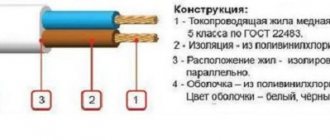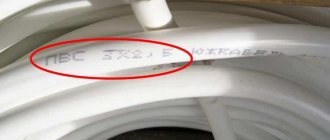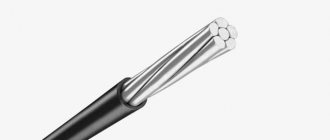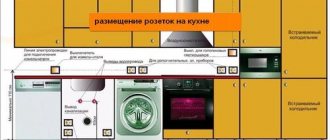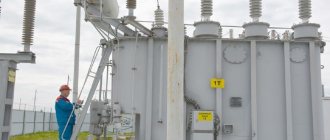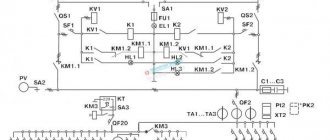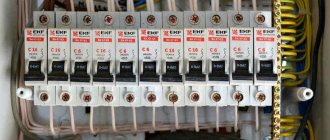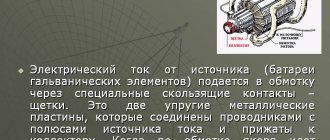The technical characteristics of a smartphone can tell you, among other things, about such an important parameter as the degree of protection, which determines the device’s resistance to external influences. The protection is designated by the letters “IP” followed by a two-digit index, for example IP67 or IP68. We will look at what this characteristic means for devices and how the parameter is deciphered.
IP68 what is it?
Not long ago, water resistance was a prominent feature of ultra-resistant
phones designed for professionals or those who spend part of their lives in adverse weather conditions. However, over the years, more and more manufacturers have decided to offer IP68 water resistance to their top phones.
In most cases, water and dust resistance is measured through IP certification, with IP68 being the highest resistance level we've ever seen on a smartphone, smartwatch, and other products. But what does IP68 mean for a phone? And above all, what tests are carried out to determine the level of protection of each device?
Decoding
All indicators can be found by reading the contents of GOST. The table provides a description of only those parameters that are indicated in the characteristics of modern devices.
| Degree of protection | Impact of external threats and corps response | Intrusion protection |
| IP5x | Dust protection. | There is protection from the smallest particles and dust. A small part may leak inside the housing. |
| IP6x | Dustproof. | Complete protection against dust particles. |
| IPx4 | Splashes of water. | The housing does not allow water to pass through from falling splashes. |
| IPx5 | Water jet. | Getting the device under running water will not damage it. |
| IPx6 | River and sea waves. | Protection against strong jets and waves. |
| IPx7 | Lowering the gadget to a depth of one meter in a reservoir. | Your device will be protected even if it falls into the sink and is immediately removed from there. It cannot stay at depth for long. |
| IPx8 | Lowering the gadget to a depth of one meter in a reservoir with the possibility of staying there for up to half an hour. | Protection of the device during a half-hour dive to a meter depth. |
| IPx9 | Withstand high temperature water. | Water resistance of the device when exposed to a high-temperature jet with high pressure. |
IP68 protection level is a common indicator among flagship smartphones and business-class devices. Protection from moisture and dust allows you to accidentally fall into the pool with it or not stay on the shore, falling from another sea wave.
If the moisture protection does not reach IP67, then this may not be indicated in the main characteristics of the device.
But if the indicator boasts IP69, this is probably a simple marketing ploy. This “WaterProof” protection is applied to equipment for intensive cleaning with a hot stream of water. For example, the chemical or food industry. If IP 69 is declared, then the documentation must indicate the following parameters: water temperature, productivity liter/sec, time spent in this state. Otherwise, the security of the gadget is at IP68, 67 or lower.
What does IP68 mean and how is it certified?
IP protection rating is a standard by the International Electrotechnical Commission, or IEC, that establishes a classification system for degrees of protection in electronic devices and equipment.
The IEC's main goal in creating this system is to offer the user an accurate reference when it comes to understanding how robust their device is, thereby preventing manufacturers from using imprecise terms to indicate the level of protection of their devices.
Read: The best inexpensive smartphones
Therefore, depending on how well—or poorly—a device is isolated from solids or liquids, it receives a certificate appropriate to its level.
Certifications are established using codes with the structure "IPXX", where the first digit refers to protection against solid particles and the second refers to resistance to liquids. In the decryption you can see what each of the numbers means in the degree of IP protection.
IP53
Consider the HTC 10 and Google Pixel smartphones, both of which are IP53 rated. Officially, this means that these devices are protected from dust - solid particles can get inside, but this does not jeopardize the operation of the devices, as well as from splashing water (without pressure) when the device is tilted up to 60 degrees. Here's what this means for you.
| IP53 means you can use your phone near a swimming pool, but don't let it fall into it! |
- Dropping your phone in the sand will not result in a brick. However, dust can get inside the phone (including under the screen), which will irritate the hell out of you later.
- If you and your phone get caught in a light rain, no problems should arise. The phone's body is splash-proof, even when tilted at 60 degrees (basically, this is how you hold it in your hand under normal conditions). But at the same time, you should hide it from raindrops - and the sooner the better. The IPX3 test involves only 10 minutes of water exposure to the phone, so these phones were definitely not designed for use in the rain.
- If you spilled a glass of water on your phone, most likely nothing will happen - but after the incident you should take the same measures as if you had spilled a regular phone. That is, turn it off and let it dry completely before turning the phone on again.
Protection against solid bodies - IPX:
- X - No available or uncertified data
- 0 — Without protection
- 1 – Effective against particulate matter less than 50 millimeters
- 2 – Effective against particulate matter less than 12.5 mm
- 3 – Effective against particulate matter less than 2.5 mm
- 4 – Effective against particulate matter less than 1 millimeter
- 5 — Dust protection. Particle penetration is not completely prevented, but it is ensured that it does not affect the operation of the equipment.
- 6 — Complete protection from dust. The entry of solid particles into the equipment is completely excluded.
IP65/68
Quite a few Sony Xperia phones have IP65/68 ratings - and that's actually better than the IP68 rating alone. From an official standpoint, this means that these phones are completely dustproof and protected from two types of water exposure - low-pressure water jets and immersion in water (1.5 meters for up to 30 minutes).
| Most smartphones can also be used in light rain, but you should not leave them in it for long, unless, of course, the device has an IP65 marking. |
- Drop your phone in the sand as much as you want - it will not receive any damage at all and will remain fully functional.
- You can be calm even in a fairly heavy downpour—you can even take your phone into the shower (although it’s not very clear why you should do this).
- Most incidents involving liquids (drink spills, falls into the pool) should not cause any problems either. But if you dropped your phone in some other liquid, after that you can (and should) wash it off with water, and only then start drying the phone.
- You can even use your phone underwater - of course, if you are sure that it is clean and fresh water - not salty sea water or chlorinated pool filler. Sony even offers underwater photography on the Xperia Z3v phone page on the company's website.
- But the IPX8 rating doesn't say anything about temperature, so you don't want to drop your phone into hot liquids (a hot tub, a bathtub, or a pot of borscht).
Water protection - IP-X
- X - No available or uncertified data
- 0 — Without protection
- 1 - Effective against dripping water
- 2 — Effective against dripping water even when the equipment is tilted up to 15º regardless of position.
- 3 – Effective against splashing water at any angle up to 60°
- 4 — Effective against splashes from any direction
- 5 – Effective against water movement from any direction
- 6 - Effective against water moving at high speed from any direction
- 6K - Effective against high velocity water at any pressure
- 7 – Effective against immersion in water up to 1 meter deep for 30 minutes
- 8 – Effective against immersion in water deeper than 1 meter for 30 minutes
- 9K - Effective against high temperature, high speed water from any direction.
Why shouldn't you take pictures with your phone underwater? Or the whole truth about what IP68 moisture protection is
Reader rating for this article: 4.9
(103)
Moisture protection has become one of the main attributes of a modern flagship. And this is understandable, because the cost of a smartphone has long crossed the psychological mark of $1000 and it is unlikely that anyone will want to pay another half of this price because of an accidentally spilled cup of coffee.
Therefore, buying an expensive smartphone without moisture protection is, at a minimum, wasteful and unreasonable.
What exactly is smartphone waterproofing? What is behind this now popular abbreviation IP68 ? Can you trust manufacturers' advertising slogans when using your phone as an underwater camera while on vacation? We will try to answer all these and many other important questions in this article!
But first, let's look at some interesting calls to Apple technical support. An iPhone X user (the phone is waterproof according to the IP67 standard) writes the following:
My iPhone X screen just went black. That is, the phone works, but nothing is displayed on the screen itself. Naturally, I contacted Apple service, where they immediately told me that water had gotten inside the smartphone. But the most offensive thing is that I have never immersed my iPhone under water in my life! The day before the problem, it rained heavily and water got on the phone, but I was sure that it was waterproof. And now they want to charge me for a new phone! What should I do???
And, what’s most interesting, almost a thousand people asked about this question (this is a standard feature on the Apple technical support page).
For the sake of objectivity, it should be noted that the iPhone X is protected from water and dust according to the IP67 standard, and this is not as reliable as the IP68 protection installed on the newest iPhones. But by opening requests to the iPhone XS Max user service, we can just as quickly find similar stories:
I bought an iPhone XS Max... A week after the purchase, I took this smartphone with me to the pool and took some very cool photos. No problem! And so, last weekend I decided to shoot in the pool again (this is a children's pool, about 30 centimeters deep). After that, a message appeared on the screen about the FaceID scanner not working with a recommendation to contact the service. I decided to turn off the smartphone first, but the screen no longer responded to touches. Having left the phone on the table until it was completely discharged, I couldn’t turn it on again... Why did Apple in the description of the phone indicate “guaranteed water resistance for 30 minutes when immersed up to 2 meters,” but in fact my iPhone broke after 10 minutes spent on 30 centimeters deep!? What should I do? I just lost my $2,000 like that????
There are a huge number of similar stories and they concern not only Apple smartphones. And the end of them all, with very rare exceptions, is one - paid expensive repairs at your own expense (unless, of course, an extended warranty was purchased separately when purchasing, covering any damage caused by the user).
What does the manufacturer say about the moisture protection of their phones?
First, we see an advertisement for one of Sony's smartphones, posted on the product page and clearly hinting at the possibility of underwater photography:
And then we read the company’s official statement that smartphones with IP68 protection (including the advertised phone) should never be immersed under water and, especially, used underwater to take photos and videos!
Or here's another example. Phil Schiller (VP of Marketing at Apple) says the phrase right from the stage during the presentation of the iPhone XS: “So if you find yourself near the pool, feel free to throw your phone into the water and don’t worry. Dive, then rinse it, let it dry and everything will be fine!”, after which we read the information on the Apple website:
Our warranty does not cover damage caused by liquid entering your iPhone or iPod.
In addition, each smartphone from the company is equipped with a special LCI indicator (liquid contact indicator), which you can easily check yourself by pulling out the SIM card tray and looking inside:
If you see a red stripe there, you can be sure that at least water has already been inside your iPhone (and the warranty no longer applies to it).
Tip : When buying a used iPhone, be sure to check its LCI indicator. And, no matter what its previous owner says, under no circumstances take a smartphone with a red stripe inside!
How to understand all this? Why do waterproof smartphones sometimes fail when in contact with liquid, and why do manufacturers refuse to carry out warranty repairs on their products without mentioning this in their advertising statements? To answer this question, you must first understand another, no less important question:
What is IP68 waterproof?
IP (Internation Protection - international protection codes or Ingress Protection - from the English ingress protection) is a globally accepted standard for measuring the degree of protection of a device from dust and water getting inside. The first digit of the two-digit IP code indicates the degree of protection against solid objects, including dust. The second digit indicates the degree of protection against fresh water.
Thus, if a smartphone meets the IP68 standard, the dust protection level is six, and the water protection level is eight. As for the numbers themselves, they are deciphered as follows:
Protection from solid objects
IP1x - Protection against solid objects, diameter >50 mm
IP2x - Protection against solid objects, diameter >12.5 mm
IP3x - Protection against solid objects with a diameter >2.5 mm
IP4x - Protection against solid objects with a diameter >1 mm
IP5x - Partial dust protection
IP6x - Full dust protection
Water protection
IPx1 - Protection against vertically dripping water
IPx2 - Protection against dripping water at an angle of 15°
IPx3 - Rain and splash protection up to 60°
IPx4 - Splashproof from any angle
IPx5 - Protected against low pressure water jet for 3 minutes
IPx6 - Protected against strong water jets for at least 3 minutes
IPx7 - Protection against water penetration when the device is immersed to a depth of 1 meter for 30 minutes
IPx8 - Immersion protection greater than 1 meter for more than 30 minutes
It would seem that IP68 protection should be enough for such a simple task as taking a photo in a children’s pool at a depth of 30 cm. But, nevertheless, some smartphones do not withstand such a “test,” which brings us to the next logical question:
Why doesn't the degree of protection always work in real life?
There are several reasons for this. The fact is that testing to obtain an IP certificate takes place under strictly controlled laboratory conditions. The device is placed in a small container of fresh water, after which it is slowly lowered to a depth of up to one and a half meters. After half an hour, it is carefully taken out of the water and checked for functionality.
But in real life everything looks a little different. We do not always slowly and very carefully lower a smartphone under water or take it out of the water. But with a sudden dive, even to a shallow depth (or actively using a smartphone underwater), pressure may arise that exceeds the norm.
The second reason is how exactly manufacturers protect the smartphone from water penetration. For example, when you take out the SIM card tray of any waterproof phone, you will see a rubber seal. And any gasket/seal is a consumable item.
High temperatures (leaving a smartphone in a car during 35-degree heat) and a number of other factors can affect the quality of such a seal. Moreover, over time, it loses its properties (micro cracks may appear), which causes the seal of the device to be compromised.
In the watch industry there is a procedure called repassage. Each model of mechanical watch must undergo regular maintenance, including the replacement of seals and all kinds of gaskets. It is done once every 3-5 years or a little less often (depending on the brand and cost of the watch). Even the most reliable diving watch (which can withstand pressure at depths of over 500 meters) will lose its properties if it is not maintained regularly. Naturally, no one ever does such procedures for waterproof smartphones.
So is it possible to immerse an IP68 protected smartphone under water?
On YouTube you can see thousands of videos of waterproof smartphones being subjected to all sorts of tests (from immersion in soda to sea water), after which they continue to work as normal. Does this mean that nothing will happen to your smartphone? Of course not.
In the case of YouTube tests, no immediate problem may occur, even if liquid gets inside the device, thereby starting slow oxidation processes.
Moisture protection is just a safety net “just in case.” And you shouldn't use your smartphone as an underwater camera without special underwater cases.
The previously mentioned Sony company makes its smartphones “waterproof” so that you can:
- Talking on the phone in the rain
- Use the device with wet hands
- Rinse your smartphone with tap water after using it in a dusty environment (sandy beach in windy weather, dusty country road)
- Watch a video while working in the kitchen (when splashes from the faucet may get on your smartphone)
Every time you submerge your smartphone under water, you risk damaging it. There are countless similar examples. And if your smartphone does not break down after the next “bathing”, this does not mean at all that it will always be like this.
Neither the IP68 standard nor any smartphone manufacturer guarantees safe use of the device underwater. Don't forget that laboratory tests are very different from real life.
PS
Don't forget to subscribe to our popular science website about mobile technologies in Telegram so you don't miss the most interesting things! We also started running a VKontakte group! If you liked this article, join us on Patreon for more fun!
How would you rate this article?
Click on the star to rate it
There are comments at the bottom of the page...
Write your opinion there for all readers to see!
If you only want to give a rating, please indicate what exactly is wrong?
What tests are performed to certify a device and assign an IP number?
However, in order for manufacturers to add IP certification to their list of device features, they must pass a series of tests that will determine whether they are prepared for possible situations. Depending on the level, these tests include:
Read: Why is my phone charging slowly?
- IPX1
: 10 minute test which sprays water equivalent to 1mm of rain per minute. - IPX2
: 2.5 minute test for each tilt direction - 10 minutes total - spraying water equivalent to 3mm of rain per minute. - IPX3
: A test lasting at least 5 minutes in which a volume of water equivalent to 10 liters per minute is sprayed at a pressure of 50 to 150 kPa. - IPX4
: Same test as performed for IPX3 certification except that the protective cover is removed during spraying. - IPX5
: A test of at least 15 minutes - 1 minute per square meter - in which water is supplied from a distance of 3 meters and at a pressure of 30 kPa with a volume of 12.5 liters per minute. - IPX6
: a test of at least 3 minutes - 1 minute per square meter
-
in which water is applied from a distance of 3 meters and a pressure of 100 kPa at a volume of 100 liters per minute. - IPX6K
: test lasting at least 3 minutes - 1 minute per square meter
-
in which water is pushed from 3 meters and at a pressure of 1000 kPa - 100 bar - with a volume of 75 liters per minute. - IPX7
: Test for a minimum of 30 minutes, carried out at the lowest point of the enclosure in which it is performed, 1 meter below the surface of the water. - IPX8
: Test typically carried out at a depth of 3 meters below the surface of the water, for a duration agreed with the manufacturer. - IPX9K
: A test of at least 30 seconds for each of the 4 corners (2 minutes in total), in which water is applied from a distance of 0.10 to 0.15 meters at a pressure of 80 to 100 bar at a temperature of 80 degrees Celsius.
In addition to the above, it must be kept in mind that the IP protection level cannot be combined with IPX6. This means the device's ability to have IPX7 protection and therefore it supports immersion, but cannot withstand water movement because it has not been tested to the IPX5 or IPX6 ratings. This is why some phones, such as the latest smartphones, have double protection ratings, such as IP65/68.
Table of watch water resistance levels (ATM water pressure)
Sealed watches usually bear the inscription Water Resistant. The level of water protection is marked with three letters ATM - atmospheric pressure.
Below we have provided a table that outlines the main levels of water resistance.
| Protection level, ATM | Protection | Application |
| 1 ATM (10 m) | Withstands pressure equivalent to depths of up to 10 meters in still water | Increased resistance to rain and splashes. Do not pour on the device or swim with it |
| 3 ATM (30 m) | Withstands pressure equivalent to a depth of 30 meters in still water | Rain, splashes, accidental immersion in water and showers. Swimming is prohibited |
| 5 ATM (50 m) | Withstands pressure equivalent to a depth of 50 meters in still water | Rain, splashing, accidental immersion in water, splashing water, surface swimming, shallow diving |
| 10 ATM (100 m) | Withstands pressure equivalent to a depth of 100 meters in still water | Rain, splashes, accidental immersion in water, splashing water, swimming and snorkeling. No deep diving, snorkeling or high-speed water sports allowed |
| 20 ATM (200 m) | Withstands pressure equivalent to a depth of 200 meters in still water | Rain, splashing, accidental immersion in water, swimming, snorkeling, surface diving and water sports. Deep sea diving prohibited |
A misconception in the world of "waterproof" gadgets is relatively new: ATM ratings have been misunderstood by users as to what exactly the meaning of the values are. On the back of watches and fitness devices, you may notice markings such as 5 ATM or 50m water resistance. But this does not mean that the device is waterproof up to 50m. This indicates that in still water 50 m below its surface, the pressure will not break the seals of the gadget. If your device is caught in a sea wave, the pressure of the moving water will hit it much stronger than the static pressure at 50 m depth, and it is quite possible that it will penetrate the device.
You must understand that water in a swimming pool and water in a moving river or sea are not the same thing. Swimming in a pool can expose the watch to pressure of up to 3 atmospheres (3 ATM, 30 m), and jumping and diving even more so. For example, a water protection level of 10 ATM is reliable for surface swimming or shallow diving, but is not suitable for diving.
IP 55
IP 55 – the product body is fully protected from the mechanical negative influence of various objects and partly from the penetration of dust. IP 55 is used in damp rooms, outdoors, where short-term exposure to the shell (housing) of equipment may occur in the form of a jet of water. Typically, electrical panel housings intended for outdoor installation have an IP rating of 55. This panel can be installed almost anywhere on the house’s site. It does not require a canopy.
IP 44
IP 44 – degree of protection indicates that the shell or outer casing of the product is protected from foreign objects with a diameter of 1 mm or more. These include various wires, pins, nuts, hand tools, screwdrivers, etc. In addition, there is protection from humidity and random splashes of water. Equipment with such a housing can be used in structures with high humidity, damp, and also outdoors, but water should not be allowed to enter by stream. The product with an IP 44 housing does not have dust protection. If the dust content of the room or premises is high, you should not use a shield with IP44.
IP 44 electrical panel enclosures are suitable for buildings with high humidity, as well as for installation outside residential premises, but under the roof. This will prevent open exposure to the water jet.



